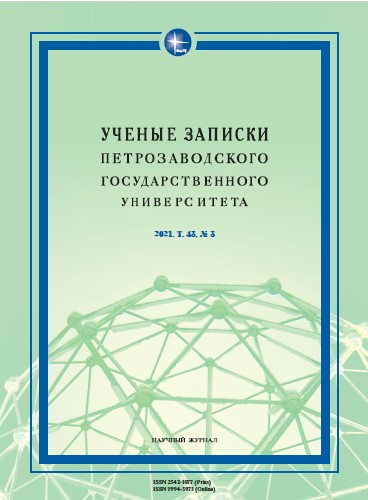СЛОВООБРАЗОВАТЕЛЬНЫЕ СУФФИКСЫ -NDU/-NDY/-ND(E) И -HINE В ЛИВВИКОВСКОМ И ЛЮДИКОВСКОМ НАРЕЧИЯХ КАРЕЛЬСКОГО ЯЗЫКА (НА ПРИМЕРЕ НАИМЕНОВАНИЙ БОЛЕЗНЕЙ)
DERIVATIONAL SUFFIXES -NDU/-NDY/-ND(E) AND -HINE IN THE LIVVI AND LUDIC DIALECTS OF THE KARELIAN LANGUAGE (IN THE NAMES OF ILLNESSES AND DISEASES)
Author(s): Tatiana Vladimirovna Pashkova, Aleksandra Pavlovna RodionovaSubject(s): Theoretical Linguistics, Morphology, Lexis, Semantics, Finno-Ugrian studies, Health and medicine and law
Published by: Петрозаводский государственный университет
Keywords: Karelian language; Livvi dialect; Ludic dialect; word formation; suffixes; morphology; names of diseases;
Summary/Abstract: The article examines one of the morphological aspects of the Karelian language, nominal suffixal word formation, with special focus on the Livvi and Ludic dialects. The research novelty is determined by the lack of studies of this matter using the Karelian materials. The relevance of the study is seen in the fact that morphology is one of the basic sections in the study of any language, and currently the Livvi dialect of the Karelian language is actively taught in the educational institutions of the Republic of Karelia, while the Ludic dialect is at the initial stage of the revitalization process. Since the aforementioned adverbs are closely related to each other, the conducted comparative study can lay the foundation for further research of their grammatical structure, namely the morphological word formation in the Karelian language. The research was carried out using comparative method and comparative historical analysis, for which the authors selected the names of illnesses and diseases from the dictionaries of the Karelian language, samples of the Karelian oral language, and the Open Corpus of Veps and Karelian languages (VepKar), as well as the corresponding lexical units collected from the speakers of the Livvi dialect. This choice of study material can be explained by the fact that the analysis of the names of illnesses and diseases makes it possible to trace the meaning and usage (attachment) of the suffixes -ndu/-ndy/-nd(e) and -hine, which the authors managed to achieve as the result of the study. Having examined the suffixes -ndu/-ndy/-nd(e) and -hine in the names of illnesses and diseases from the Livvi and Ludic dialects of the Karelian language, the authors concluded that they had identical meanings: the suffixes -ndu/-ndy/-nd(e) denote the result of an action or an action process, while the suffix -hine denotes the names of living and mythical creatures or phenomena (in this particular case, mythological diseases). It is interesting to note that when a complex deverbal affix -ndahine/-ndähine comprised of two suffixes (-ndu/-ndy/-nd(e) + -hine), each with its own semantic specifics, is added, they acquire the same semantic meaning: one part of lexemes starts meaning the result of an action, while another – a mythological creature or, as in this case, a certain mythological disease.
Journal: Ученые записки Петрозаводского государственного университета
- Issue Year: 43/2021
- Issue No: 3
- Page Range: 17-22
- Page Count: 6
- Language: Russian

